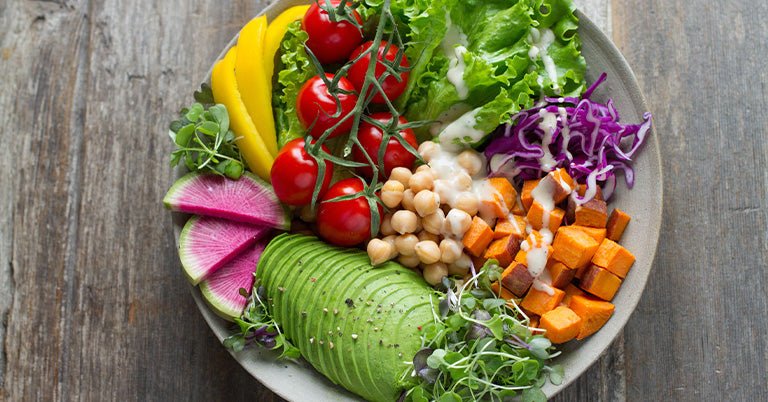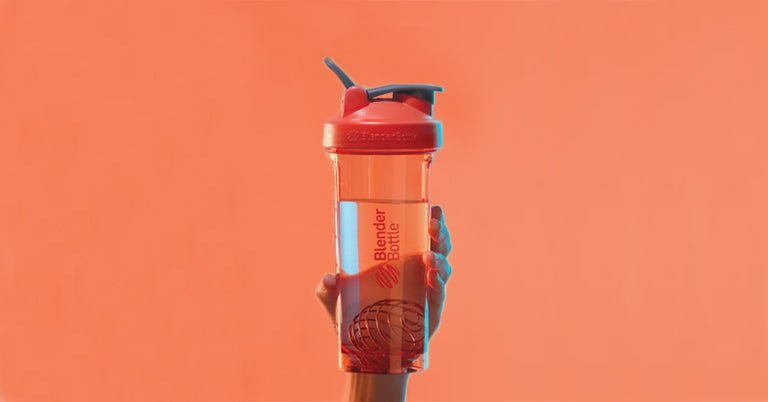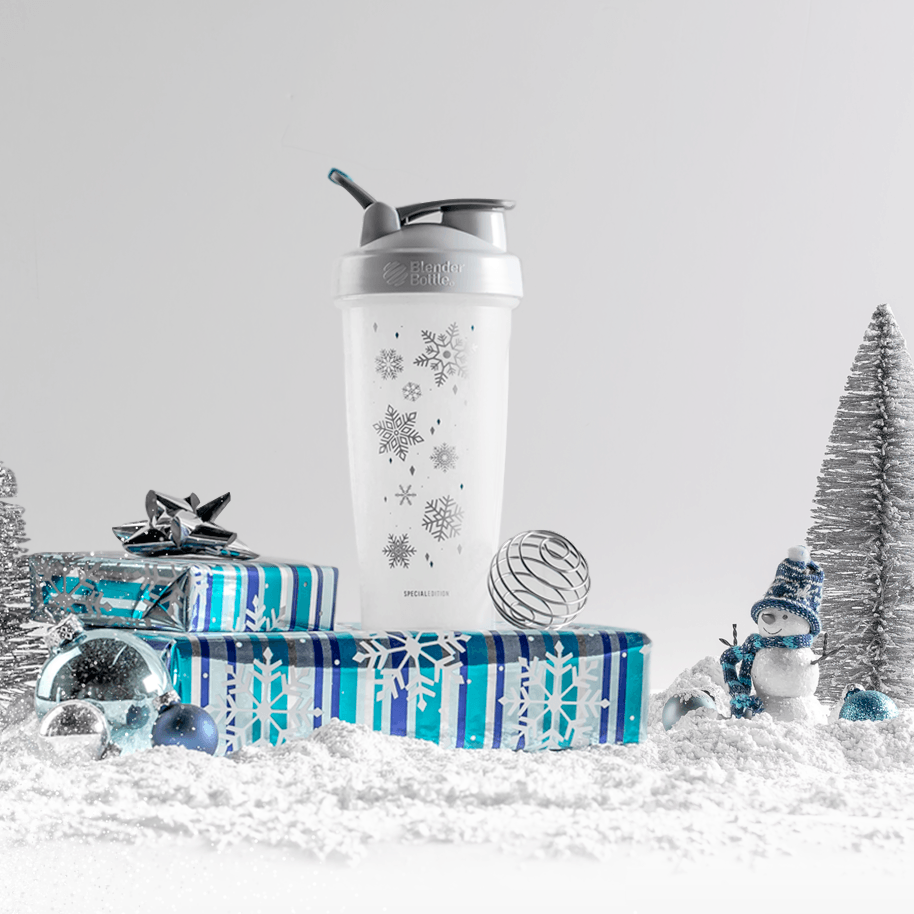Considering a vegan or vegetarian diet, but wondering how you'll get adequate protein? It's not as hard as you might think. There are actually plenty of high-protein vegan foods and high-protein vegetarian foods that can fuel your body and keep things interesting from a culinary standpoint. Contrary to what some people think, not all vegan and vegetarian protein sources taste like sawdust!
Let's take a look at 10 of the best high-protein foods for vegans and vegetarians, and ways to incorporate them into your overall nutrition plan.
1. Lentils
Lentils, often hailed as a staple in vegan and vegetarian diets, are not only delicious but also pack a powerful punch of protein and essential nutrients. These versatile legumes come in various colors and sizes, each offering its unique flavor profile and culinary possibilities.
Types of Lentils:
-
Brown Lentils: These are the most common variety, boasting a hearty flavor and firm texture. They tend to break down when cooked, making them ideal for thickening soups & stews.
-
Green Lentils: With a slightly peppery taste and robust texture, green lentils are perfect for salads, side dishes, and main courses. They retain their firmness even after cooking, adding a satisfying bite to your meals.
-
Red Lentils: Known for their quick cooking time and delicate flavor, red lentils are often used in soups, curries, and dahls. They tend to disintegrate when cooked, creating a creamy texture that's perfect for thickening sauces and creating comforting dishes.
Nutritional Profile:
Lentils are not only rich in protein but also provide a plethora of essential nutrients, including fiber, iron, folate, and antioxidants. Just one cup of cooked lentils contains an impressive 18g of protein and nearly 30g of fiber, making them a nutrient-dense addition to any diet.
Cooking Methods:
From simmering in soups to simmering in stews, lentils lend themselves to a variety of cooking methods. For a quick and easy meal, try boiling lentils until tender and then tossing them with your favorite herbs, spices, and vegetables. Alternatively, you can sauté onions, garlic, and other aromatics before adding lentils and cooking them in broth for added flavor.
Recipe Ideas:
-
Hearty Lentil Soup: Simmer brown lentils with carrots, celery, onions, and tomatoes for a comforting and nutritious soup that's perfect for chilly days.
-
Spicy Lentil Curry: Cook red lentils with curry paste, coconut milk, and vegetables for a flavorful and satisfying curry that pairs perfectly with rice or naan.
-
Lentil Salad with Tahini Dressing: Toss cooked green lentils with mixed greens, cucumber, cherry tomatoes, and a creamy tahini dressing for a refreshing and protein-packed salad.
Whether you're a seasoned lentil lover or new to incorporating these legumes into your diet, there's no denying the versatility and nutritional benefits of lentils. Experiment with different varieties and recipes to discover your favorite way to enjoy these plant-powered protein sources.
2. Quinoa
Quinoa stands out as a nutritional powerhouse among grains, revered for its complete protein status and versatility in the kitchen. Quinoa offers a delightful nutty flavor and a satisfying texture, making it a staple in vegan, vegetarian, and gluten-free diets alike.
Types of Quinoa:
-
White Quinoa: The most widely available variety, white quinoa cooks up fluffy with a mild, slightly nutty flavor. It serves as a versatile base for salads, pilafs, and breakfast bowls.
-
Red Quinoa: Red quinoa boasts a slightly earthier flavor and a firmer texture compared to white quinoa. Its vibrant color adds visual appeal to dishes and pairs well with roasted vegetables, beans, and hearty sauces.
-
Black Quinoa: Black quinoa offers a rich, earthy flavor and a slightly crunchy texture. It holds its shape well when cooked, making it an excellent choice for grain bowls, stuffing, and side dishes.
Nutritional Profile:
Quinoa is renowned for its exceptional nutritional profile, containing all nine essential amino acids, making it a complete protein source. In addition to protein, quinoa is rich in fiber, vitamins, minerals, and antioxidants. One cooked cup of quinoa provides approximately 8g of protein, along with significant amounts of magnesium, manganese, phosphorus, and folate.
Cooking Methods:
Cooking quinoa is a straightforward process that yields fluffy, tender grains every time. Rinse the quinoa under cold water to remove any bitter coating, then combine it with water or broth in a saucepan. Bring to a boil, reduce the heat, cover, and simmer until the liquid is absorbed and the quinoa is tender, typically about 15-20 minutes. Fluff with a fork before serving.
Recipe Ideas:
-
Quinoa Salad with Roasted Vegetables: Toss cooked quinoa with roasted bell peppers, zucchini, cherry tomatoes, and a lemon-herb vinaigrette for a colorful and nutritious salad that's perfect for picnics and potlucks.
-
Quinoa Breakfast Bowl: Top cooked quinoa with sliced bananas, berries, nuts, seeds, and a drizzle of maple syrup for a hearty and satisfying breakfast option that's packed with protein and fiber.
-
Quinoa-Stuffed Bell Peppers: Stuff halved bell peppers with a mixture of cooked quinoa, black beans, corn, salsa, and spices, then bake until tender for a flavorful and filling meal.
Whether you're seeking a protein-rich alternative to rice or looking to add variety to your grain repertoire, quinoa offers endless possibilities for nutritious and delicious meals. Experiment with different colors and recipes to discover the versatility and culinary delights of this ancient superfood.
3. Peanut Butter
Peanut butter is not only a beloved childhood favorite but also a nutritious powerhouse packed with protein, healthy fats, and essential nutrients. This creamy spread adds rich flavor and satisfying texture to a wide range of dishes, making it a versatile staple in vegan, vegetarian, and omnivorous diets alike.
Types of Peanut Butter:
-
Natural Peanut Butter: Made from just peanuts and sometimes salt, natural peanut butter boasts a pure, unadulterated taste and texture. It typically requires stirring to incorporate the natural oils, but it's free from added sugars, hydrogenated oils, and preservatives.
-
Creamy Peanut Butter: Smooth and spreadable, creamy peanut butter is a popular choice for sandwiches, dips, and baked goods. It's made from roasted peanuts that are ground into a smooth paste, often with the addition of a small amount of oil and sugar for consistency and sweetness.
-
Chunky Peanut Butter: For those who prefer a bit of crunch, chunky peanut butter contains chopped peanuts for added texture and flavor. It's perfect for adding a delightful crunch to sandwiches, oatmeal, and yogurt parfaits.
Nutritional Profile:
Peanut butter is not only delicious but also nutrient-dense, providing a hearty dose of protein, healthy fats, fiber, vitamins, and minerals. Two tablespoons of peanut butter deliver approximately 8g of protein, along with significant amounts of monounsaturated fats, vitamin E, niacin, and magnesium.
Ways to Enjoy Peanut Butter:
-
Spread it on Toast: Start your day off right by spreading peanut butter on whole grain toast and topping it with sliced bananas, strawberries, or a drizzle of honey for a satisfying breakfast or snack.
-
Blend it into Smoothies: Add a spoonful of peanut butter to your favorite smoothie recipe for a creamy texture and a boost of protein and flavor. Combine it with bananas, spinach, almond milk, and a dash of cinnamon for a nutritious and delicious treat.
-
Use it in Cooking and Baking: Incorporate peanut butter into savory dishes like stir-fries, sauces, and marinades for added depth of flavor. You can also use it in baking recipes for cookies, brownies, and energy bars to impart richness and moisture.
Recipe Ideas:
-
Peanut Butter Banana Smoothie: Blend together frozen bananas, peanut butter, Greek yogurt, almond milk, and a sprinkle of cinnamon for a creamy and satisfying smoothie that's perfect for breakfast or post-workout fuel.
-
Thai Peanut Noodles: Toss cooked noodles with a sauce made from peanut butter, soy sauce, lime juice, garlic, ginger, and chili flakes for a flavorful and satisfying dish that's ready in minutes.
-
Peanut Butter Energy Balls: Mix together peanut butter, oats, honey, and dark chocolate chips, then roll into bite-sized balls for a quick and nutritious snack that's perfect for on-the-go.
Whether you enjoy it straight from the jar or incorporate it into your favorite recipes, peanut butter offers a delicious and nutritious way to add protein and flavor to your meals and snacks. Experiment with different varieties and creative combinations to discover the endless possibilities of this beloved spread.
4. Tofu
With about 10g of protein per cup, tofu is an obvious protein source for vegans and vegetarians alike. Tofu is not too exciting on its own, but it readily absorbs the flavors of whatever herbs, spices, sauces and other ingredients it's cooked with, making it a versatile protein source. Try tofu in stir frys, curries, sandwiches, wraps, soups, and burgers along with the protein, you'll get plenty of iron and calcium, too.
5. Chickpeas
With around 15g of protein per cooked cup, it's no wonder that chickpeas are a favorite protein source for many vegans and vegetarians. One of the most popular ways to enjoy chickpeas is ground into hummus, which is then spread on sandwiches or used as a dip for vegetables, crackers, chips, or pita bread. Whole chickpeas are an excellent addition to salads, soups, and stews. They're also quite tasty and have a satisfying crunch when roasted and served as a snack.
6. Spinach
All you big salad lovers, rejoice! Spinach packs a punch when it comes to protein, containing 5-7g per cup. Whether you eat it raw or cooked, this dark leafy green also supplies plenty of fiber, iron, vitamins, and minerals. In addition to trying spinach raw in salads and wraps, toss it into just about any dish you cook: scrambles, omelets, quiches, soups, stews, pasta sauces, and stir frys.
7. Chia Seeds
This tiny seed is no nutritional weakling. Rather, chia is considered a superfood, with 5g of complete protein per two tablespoons, plus vitamins, minerals, and antioxidants aplenty. It's easy to add chia to your daily diet just mix a few tablespoons of seeds into your next protein shake, smoothie, oatmeal, yogurt, or acai bowl.
8. Eggs
Looking for a protein rich food for vegetarians? It's hard to beat a basic egg. One large egg offers 6g of protein. If you're concerned about cholesterol, stick with the egg white only and you'll still get about 3.6g of protein. Eggs are another extremely versatile food and taste great either in the starring role (hard boiled, scrambled, fried, or in omelets and frittatas) or as an addition to numerous recipes.
9. Nutritional yeast
The secret to vegan macaroni and “cheese,” nutritional yeast is commonly used as a cheese substitute for the dairy averse. It's delicious in tofu scrambles, or as a tasty and nutritious flavoring atop popcorn. Just two tablespoons of nutritional yeast yields 8g of protein. When fortified, it's also a source of zinc, magnesium, copper, manganese and B vitamins.
10. Non-Dairy & Plant-Based Protein Supplements
Non-dairy and plant-based protein supplements such as egg white, soy, pea, and rice proteins work well for anyone with a dairy allergy or intolerance. Egg white and soy are complete proteins, while pea and rice proteins are incomplete, but can be combined to provide all nine essential amino acids. Aside from using protein powders to make protein shakes, these supplements can be stirred into yogurt or oatmeal for an added boost at breakfast. (Consult each supplement's nutritional label for protein volume per serving.)
Remember plenty of high-protein foods for vegans and vegetarians work great as protein shake ingredients. Besides the obvious plant-based protein powders, you can easily mix chia seeds and any type of nut butter in your favorite BlenderBottle shaker cup. Want a few recipes to get you started? Try our Nutty Monkey Protein Shake (sub almond or soy milk to make it vegan) or our Peanut Butter Apple Protein Shake, using your favorite plant-based protein powder.





Leave a comment
All comments are moderated before being published.
This site is protected by reCAPTCHA and the Google Privacy Policy and Terms of Service apply.